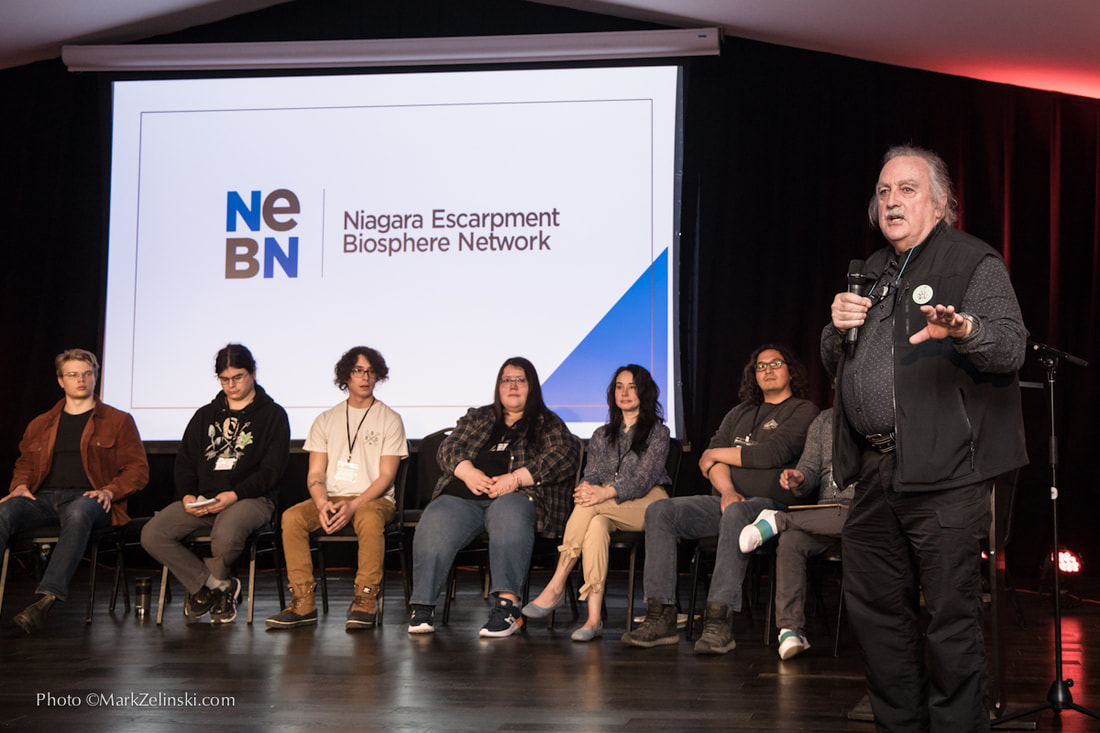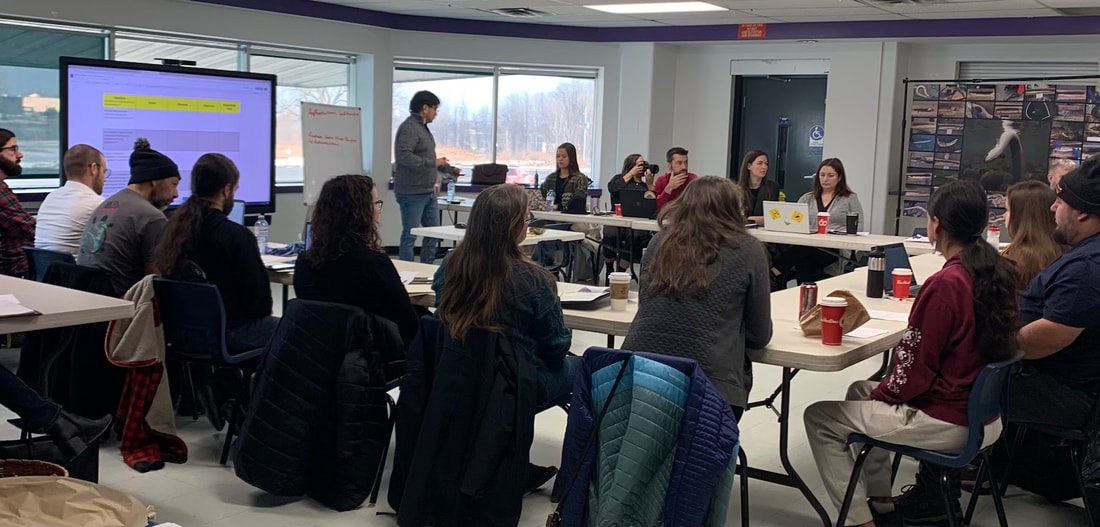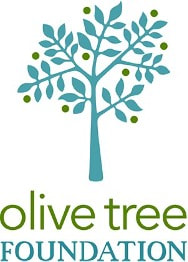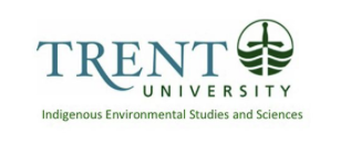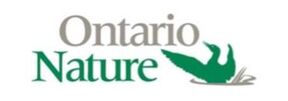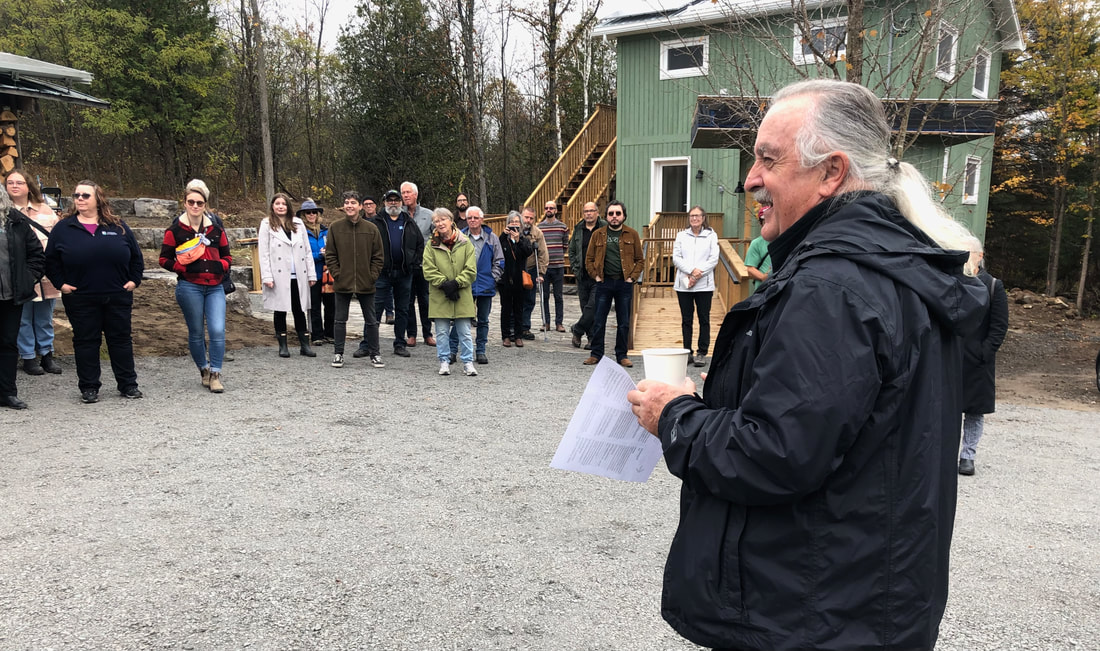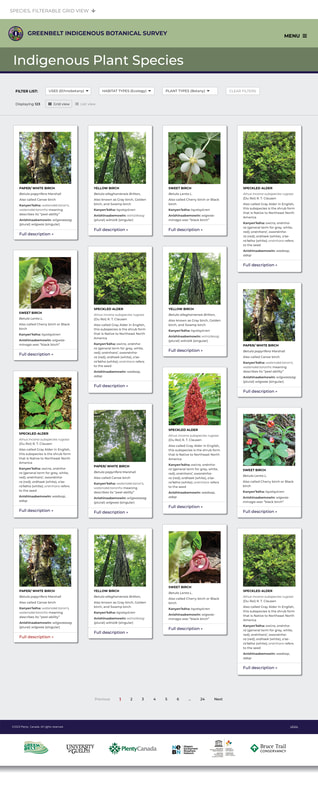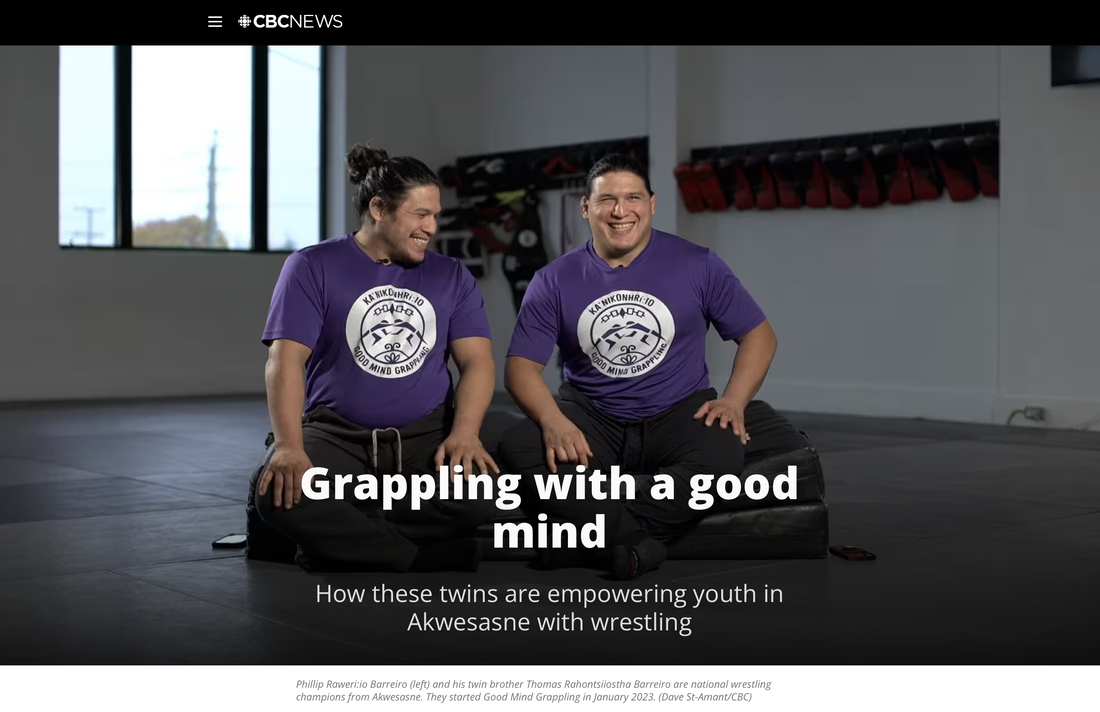|
Photo by @MarkZelinski.com 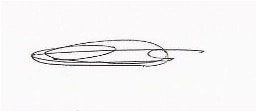 Every now and then along comes a moment, an experience, that reaffirms your confidence that people can be mindful, considerate, and even beautiful in dealing with difficult issues. Such was the example set by the recent Two-Eyed Seeing and Ethical Space Training: Indigenous Climate Change Action conference that Plenty Canada produced in partnership with Mohawk College and the Niagara Escarpment Biosphere Network. Held, appropriately, at The Gathering Place in Six Nations of the Grand River on March 14 and 15, the conference planners, speakers, and presenters, along with an energetic and engaged audience all came together to create a remarkable atmosphere founded upon knowledge, respect, and empathy.The team that pulled this conference together is to be commended on every level. From fundraising to logistics, speaker cultivation and booking, agenda scheduling and food service planning, to time management and youth engagement, the event played out like a well-crafted symphony of coordinated intent. At its core the conference explored “the ways in which Indigenous principles can be used to develop a response to the impacts of climate change.” Launching the session were esteemed elders who set the tone and provided knowledge-based cultural context for the presentations. Kevin Deer, from Kahnawake Mohawk Territory provided a fulsome explanation of the Haudenosaunee Thanksgiving Address. Rick Hill, Tuscarora, Indigenous Innovations Specialist with Mohawk College, spoke about how climate change is adversely impacting Indigenous food security, biodiversity, human health, ways of life, and other factors that are determining the future for the next seven generations. Tim Johnson, Mohawk from Six Nations of the Grand River, senior advisor to Plenty Canada and Niagara Parks, provided an orientation that outlined the long history of Indigenous concerns about the state of the earth and particularly, climate change. And revered Mi’kmaw Elder Albert Marshall, who with his wife Murdena developed the philosophy of Two-Eyed Seeing, was present for a video conferencing session over which myself and Trent University Professor Dan Longboat presided. In addition, Oren Lyons, Haudenosaunee faithkeeper and a principal figure in the development of the United Nations Declaration on the Rights of Indigenous Peoples, spoke about the consequences of not respecting natural law. Along with a presentation by Dr. Sarah Burch, executive director of the Waterloo Climate Institute and lead author of the United Nations’ Sixth Assessment Report of the Intergovernmental Panel on Climate Change, and Katherine Flynn from the Mohawk College Centre for Climate Change Management, this formulated the remarkable lineup that launched the conference. From there a series of additional fascinating and engaging presentations, driven to a large extent by youthful scientific and cultural energy, embraced and supported by experienced and compassionate elders, generated a power I’ve rarely experienced at such events. Our challenge going forward is to continue the momentum generated at this conference. Stay tuned forinformation provided by Plenty Canada, Mohawk College, and the Niagara Escarpment Biosphere Network for the next steps in this process. We all agreed that this initiative requires not only constant, but amplified attention and action. I thank everyone who was involved in making this essential program happen, including, of course, our sponsors Environment and Climate Change Canada, Mohawk College, and the Department of Canadian Heritage. What you have all done is give this elder confidence — not faith but confidence — that good minds, empowered with evidence-based knowledge and empathic traditions, can arrive at wise decisions based upon the principles of Two-Eyed Seeing. For the sake of our children and those who follow, this is not an option, but a responsibility and obligation. Chi Miigwech. Niá:wen. Merci. Thank you. Larry McDermott Executive Director Plenty Canada
0 Comments
Photos by @MarkZelinski.com Over two hundred and ninety attendees from numerous conservation, environmental, and Indigenous organizations packed The Gathering Place conference centre in Six Nations of the Grand River to gain training insights into Two-Eyed Seeing and Ethical Space in relation to the challenges presented by climate change. The event, organized by the Niagara Escarpment Biosphere Network, Mohawk College, and Plenty Canada featured a stellar line-up of Indigenous elders and scientists (not mutually exclusive), and technical specialists who worked in a number of fields to mitigate and reverse the impacts of climate change.
This gathering explored the ways in which Indigenous principles can and are being used to develop responses to the impacts of climate change including environmental shifts in seasons and cycles, extreme weather events, physical and mental health, food production, and more. The conference goal was to create Ethical Space for the engagement of ideas and inspiration as we begin to face the new ecological scenario created by Climate Change. Topics featured included Two-Eyed Seeing and Ethical Space, Natural Law and Cultural Prophecy, Wampum Law, Governance, and Reconciliation, Indigenous Food Security, Net-Zero Energy Building, Honouring Water, and Two-Eyed Seeing Bird Knowledge among many other approaches. Present among the Indigenous leaders headlining sessions were Mi’kmaw Elder Albert Marshall (the Co-founder of the Two-Eyed Seeing philosophy), Shabot Obaadjiwan Elder Larry McDermott (Executive Director of Plenty Canada), Mohawk Elder Roronhiakewen Dr. Dan Longboat (Trent University Director of Indigenous Environmental Studies), Tuscarora Elder Rick Hill (Indigenous Innovations Specialist at Mohawk College), Onondaga Elder Oren Lyons (Faithkeeper and a principal figure in the development of the United Nations Declaration on the Rights of Indigenous Peoples), Shawanaga First Nation Elder Marilyn Capreol, and Charlene Winger-Jones (Hereditary Council member, Water Walker, and Co-chair of the Niagara Escarpment Biosphere Network). In addition, Mohawk Elder Tim Johnson (Senior Advisor to Plenty Canada, Niagara Parks, and the Royal Ontario Museum) and Seneca Elder Scientist Henry Lickers (Environmental Science Officer for the Mohawk Council and International Joint Commission) provided an orientation on the history of Indigenous engagement with climate change and science-based actions underway on both sides of the international border, respectively. A variety of fascinating sessions offered a broad range of information and perspectives on how to assess and deal with the crucial, and some would say existential, crisis of climate change impacting the health and well-being of future generations. A conversation between Dr. Sarah Burch, Executive Director, Waterloo Climate Institute and Lead Author of the United Nations’ Sixth Assessment Report of the Intergovernmental Panel on Climate Change, and Katherine Flynn from the Mohawk College Centre for Climate Change Management, examined the scientific evidence and projected impacts of Climate Change. There were other exciting sessions that approached the topic through unique approaches that adhered to the conference’s main concept. For example, the leaders from four different bird-related research projects spoke about their progress, challenges, and experiences while incorporating Two-Eyed Seeing into their methodologies. The panel included Joseph Pitawanakwat (Founder & Director of Creators Garden, Leader of Anishinaabe Aki project), Andrés Jiménez (Anishinaabe Aki project, author of best-selling online course The Beginners Guide to Birdwatching: Finding Birds and Happiness), Mike Burrell (Ontario Breeding Bird Atlas Coordinator, member of the Birds Species Specialist Subcommittee for COSEWIC), and Lauren Jones (Wildlife and Stewardship Manager for Six Nations Lands and Resources.) In a highly engaging and entertaining session that included youth participation, entitled United Nations Sustainable Development Goals and Food Security, Jessica McLaughlin (Anishinaabe from Long Lake #58 First Nation) and Rosie Kerr (Post-doctoral fellow in the Sustainable Food System’s Lab, Lakehead University) reviewed how food sovereignty is the right of people to have access to healthy culturally appropriate foods, to grow and harvest foods produced through sustainable and ecologically sound methods, and for communities to define their own food systems. The purpose of their effort seeks to Identify, develop, and share civil society and Indigenous food system best practices along with policy analysis to address gaps in knowledge and data to advance a number of Sustainable Development Goals (SDGs). The manner in which Jessica and Rosie applied Indigenous perspectives to each of the SDG’s, including the introduction of new associated graphics, offered clear and indelibleexamples of how Two-Eyed Seeing is being utilized. A practical demonstration on what individuals and organizations can do to greatly reduce or even eliminate their carbon emissions was featured in the session dealing with Net-Zero Energy Building and Honouring the Water. Garrett Johnson (Researcher with IDEAWORKS at Mohawk College) and Tony Cupido (Professional Engineer and Ph.D. with 37 years of experience in engineering, facilities management and capital development) conducted a program opened by Charlene Winger-Jones that detailed Plenty Canada’s rehabilitation of its Lanark, Ontario offices using innovative technologies that make efficient use of rain water while reducing and treating waste water through natural systems, and the application of solar energy applications that have made the organization’s CampUs energy negative. Capping off the event was a moving session involving a significant and substantial group of youth who served as respondents to the conference program. Led by Mohawk Doctoral Candidate Abraham Francis, whose work specializes in the intersections between Indigenous and scientific knowledge, each of the youth presented their observations and experiences on what they saw as a way forward. The substance, tone, and tenor of their remarks had a tremendous impact upon those attending the conference. Each day began with cultural presentations designed to focus minds and hearts on the work. Elder Kevin Deer, from Kahnawake Mohawk Territory and the Director of Indigenous Knowledge Quality Learning and Teaching Excellence at First Nations Technical Institute, opened Day One delivering an explanation of the Haudenosaunee Thanksgiving Address, followed by Craig Abotossaway giving a short reflection on the Seven Sacred Gifts. On Day Two Elder Josh Eshkawkogan, a pipe carrier, sweat lodge conductor, and orator from the Wikwemikoong Unceded Indian Reserve, conducted a Pipe Ceremony. During the evening of the first day of the conference a special concert event entitled TREATY: A Reconciliation Revelry, featured an ensemble of award-winning musicians including Joshua Arden Miller and the Pappy Johns Band, along with The Ollivanders and Rob Lamothe. They took audience members on a journey of varied experiences that led Canadians through stories of encounter and conflict to resolution, landing on uplifting notes of recognition, understanding, and respect. The program’s stories and messages, conveyed through video, narrative, and of course music, provided attendees with historical context for understanding Indigenous experiences and Indigenous realities today. Brief film segments featuring Indigenous and Canadian leaders in civil society, education, culture, and the arts, who speak to the themes identified by a list of definitions of select words, were followed by curated musical performances thereby building a story that paved the way forward for Truth and Reconciliation. Event sponsors were Environment and Climate Change Canada, Mohawk College, and the Department of Canadian Heritage. The conference was documented by photographer Mark Zelinski and Audio-Visual services provided by Thru The Red Door. — Staff report On February 8th and 9th, 2024, Plenty Canada Executive Director Larry McDermott, and Operations and Environment Programs Manager Emily Morris, attended the American Eel Symposium hosted by the Mohawk Nation at Akwesasne. The symposium brought together representatives from First Nations, including Mohawk and Algonquin communities, environmental non-profits, and government regulators such as the Department of Fisheries and Oceans. The goals of the symposium included achieving a common understanding of the past and current conservation efforts for American Eel, increasing understanding of Indigenous relationships to the American Eel, identifying actions that will be taken over the short and long term to increase eel passage and reduce eel mortality throughout Algonquin and Mohawk territories, and promoting Indigenous co-management, decision-making, and participation in mitigation activities and capacity building.
The American Eel has always been an extremely important species for many Indigenous communities, including both Anishinaabek and Haudenosaunee peoples, and is used for a variety of different things including food, clothing, medicine, and offerings (learn more about the eel here). Eels often provided a lifeline for many communities during hard times as preserved eel lasts longer than any other protein source. American Eels used to be abundant in the St. Lawrence River watershed, including the Ottawa River watershed, but have experienced a 99percent decline, mainly due to the construction of hydropower dams. The American Eel is classified as endangered in Ontario and was classified as threatened by the Committee on the Status of Endangered Wildlife in Canada in 2012. However, the species has never been included in the Species at Risk Act and therefore receives no legal protection. The decision on whether or not to list the American Eel under the Act has been underway since 2015 and continues to be delayed. Additionally, although the American Eel is classified as endangered in Ontario and a recovery strategy was published in 2013, a government response statement is needed to actually commit Ontario to action. The government response statement was legally due in August of 2014 ... but we are still waiting. We will continue to engage in this issue and demand action on behalf of our relative, Pimizì, the American Eel. — Special thanks to Canadian Parks and Wilderness Society, CPAWS-OV, for the event summary and photo. The Youth Circle for Mother Earth (YCME) project supports a cross-cultural network of young Indigenous and non-Indigenous leaders looking to honour their responsibilities and relationships with Mother Earth. Led by a Coordinating Circle, members act as ambassadors for the land, air and waters. This includes the natural world and its conservation, protection, and restoration. This past February, members of the YCME project gathered at the Camp Kawartha Outdoor Education Centre for a retreat with the theme “Looking Back, Looking Forward.” The retreat was an opportunity for Indigenous and non-Indigenous youth and partners to participate in workshops and discussion circles led by Elders and Knowledge Holders, as well as reflect on past accomplishments as a Circle and plan for the coming new year. Winter Retreat 2024: Reflections “The winter retreat was a great experience that opened my eyes to countless new avenues and provided new experiences and connections that have changed the course of my future. In 2024, I am looking forward to assisting and planning workshops with the YCME. During one of the YCME planning sessions at the retreat, members used a workshop planning template to brainstorm ideas about workshops they would like to host. The ideas were all extremely creative and provided opportunities for people to connect and work with nature. Even with the exciting new ideas, the 2024 Youth Summit for Mother Earth, is what I look forward to the most. I can only imagine what we as a group can accomplish this year, how we can help and learn from each other, and what we will bring back to our own communities.” – Lyla C., YCME Member “I think now, more than ever, it’s critical to have spaces where youth can express their complex climate emotions. So often are our days filled with anxiety over the future and what it will look like. Having a space where we can be open about these emotions while simultaneously fostering hope and resiliency is what allows us to work towards climate action. Being able to participate in the YCME retreat was such a breath of fresh air, having the opportunity to connect with youth who are dedicated to conservation and inspired to take action towards our shared planet has energized me. The opportunity to learn from elders in the region about the land, water and stars, recentered me. Learning from the other members of the YCME who shared their traditions and knowledges with me was truly something I’ll never forget. Leaving this retreat, I feel so beyond grateful for the YCME and its collaborators. I am looking forward to all that comes next. Chi Miigwetch!” – Rae L., YCME Member “I absolutely adored the retreat we had; it was the highlight of my year. Being a part of the YCME means investing in the environmental future and recognizing the need to return to our roots for the earth and its inhabitants to flourish. Throughout the retreat, I had the opportunity to meet new friends and reconnect with old ones, all while appreciating the beauty of the land. It provided a safe and inviting environment to learn new practices and deepen my connection with my culture. Taking a break from the busy routine of school and work allowed me to reflect on what truly matters, reigniting my passion for living and learning with Mother Earth. Meeting like-minded people was a rewarding experience, and my favourite moment was the constellations discussion, where we sipped cedar tea and delved into discussions about our shared humanity and the interconnectedness of everything on Earth. I eagerly look forward to seeing what else the YCME has in store for the future and strongly recommend this organization to anyone seeking connections with grounded and inspiring individuals, all while making a positive difference here on Mother Earth.” – Kylee S., YCME Member Interested in joining the YCME Coordinating Circle or nominating a youth? Learn more about the application and nomination process. – Authored by YCME Members This project is funded in part by the Government of Canada, Ontario Power Generation, the Johansen Larsen Foundation and the Olive Tree Foundation. Youth Circle for Mother Earth activities are supported by four partnering organizations: the Indigenous Environmental Institute at Trent University, Plenty Canada, Walpole Island Land Trust, and Ontario Nature.
Early in 1976, a horrendous overnight earthquake killed 20,000 people in Guatemala. While the catastrophe affected much of the country, the devastation was deadliest in Maya communities.
In North America, alongside and beyond governmental pledges, American Indian communities and counter-cultural relief organizations responded. Among the Mohawks of Akwesasne, their national Native newspaper organized an overland relief mission, composed of nurses, carpenters, agriculturalists, and others who volunteered in various projects for several weeks at a time. This author was invited to help lead the mission. Plenty Canada, then incipient as a Non-Governmental Organization with Larry McDermott among its crew, fielded a mission as well that summer, one that coincided with the same valley of the Akwesasne mission. It was a meeting of mutual commitments and kindred spirits that would launch life-long collaborations for now elder colleagues. We converged on numerous projects over the years and convened conferences and cultural gatherings that would contribute and sometimes lead the conception of Canadian international development approaches with Indigenous peoples. The experience of 1976 marked a time of response to a serious catastrophe, the development of sound project commitments, and deep personal friendships with Maya people. Initially there were projects with traditional farming families among Caqchiquel and Qhiche, later and most profoundly and long term among the Maya-Q’eqchi people of Alta Verapaz. The nearly five decades since the earthquake of 1976 have witnessed an equally seismic -- and horrendous -- political history, including a long and bloody civil war that unleashed hundreds of military massacres and brutal torture against peaceful and materially humble, yet highly cultured, Maya communities. Over time, the war subsided, peace accords were reached, and the communities launched intro long, painstaking journeys of recovery and revitalization, which are ongoing. With Plenty Canada Executive Director McDermott, we have sustained many collaborations, always weaving close ties with Maya elders, while marking hundreds of events among dozens of small and large projects. The approach has always been to engage with elders, as well as with young activists and always working from within community, privileging the orientations of those who live it. Guatemala’s violent contemporary history upturned a largely traditional Central American society, one lacking in social justice yet still strong in familial ties and decent social values. The present era nationally is one of ongoing social insecurity. Much organized crime and regressive evangelical preaching penetrates political life as people cope with the pandemic’s residual economic stress, worsened by the accelerating effects of climate change. Indigenous community development requires long-terms strategies. The struggle to sustain social unity and cultural cohesion is paramount. The reuniting by Indigenous people after times of major stress and violence deserves attention and support. It is a natural response, and a re-foundational effort. In the Q’eqchi country, as in much of the Guatemalan highlands, the strength of traditional culture and consciousness of ancestral teachings has helped clusters of Maya people, including whole communities to sustain social proximity and maintain daily living relations among large extended families grounded in particular places. Presently, Plenty Canada’s work in Guatemala supports the leadership of young women engaged in the important work of assisting and uplifting the lives and profiles of culture bearing women elders. The new generation women leaders currently work with several Q’eqchi-speaking communities, some 200 families, mostly led or guided by women elders. Women elders are most often the central culture carriers of valores y saberes ancestrales, “ancestral values and knowledge.” The elders in the project are traditional knowledge keepers in Maya weavings, including many beautiful and intriguing cloth designs as well as some of the most ancient patterns and stitches of the traditional huipil (top garment) worn by the women. The community groupings of women elders include also traditional midwives, as well as keepers of healing methods around a large repertoire of medicinal herbs, around the interpretation of healing dreams and about the Maya medicine of time, the Sacred Calendar. Some if not most are also master gardeners, carriers and holders of many types of seeds and expert at family-sustaining culinary traditions. Among ongoing work and activities: support for training of new apprentices; documentation of practices, histories and approaches on weaving and the other main themes; introduction of new and appropriate water capture and drainage systems and other needed repairs for elders’ homes; sponsorship of travel to training events and hosting events. The project has developed an efficient, well-trained working crew, charged with fixing elder housing. Its first year, 2019, impacted by the exploding pandemic, needing a major medical response. The project distributed emergency foods and medicines, and developed needed information in Q’eqchi language for the communities. — Jose Barreiro  At Plenty Canada we’ve done our best to place our collective intelligence and human values at the forefront of our work. By collective intelligence, we refer to evidence-based knowledge and the philosophy of Two-Eyed Seeing as developed by our board member Albert Marshall. We believe that societies should make sound decisions based upon factual information devoid of special interest influences, which remain the primary cultural and political factors negating progressive work to stop global warming, as but one example. Our community, however, is one with which we are proud to be associated. It is a community that seeks lifelong learning and the application of determined — Indigenous and scientific — knowledge. We understand that adherence to greedy, negative, and destructive ideologies and practices are harmful not only to ourselves as humans, but to all living creatures on the planet. Our community possesses humility and healthy self-worth, balanced with empathy, so that wise decisions can be made for ourselves and future generations. As we near the holidays, we reflect upon all of the wonderful people with whom we’ve been active on a wide variety of projects over the past year, and say thank you. In particular, I want to state that at Plenty Canada we see our projects as manifestations, expressions of our knowledge, values, and intentions, which we share with our partners and funders. Our value of living with minimal impact upon the environment resulted in our renovated and recently unveiled office complex, the Plenty Canada CampUs in Lanark, which has achieved energy negative status. In addition, our Six Nations Bureau office has done much the same, adding solar panels to become fully energized by the Earth’s natural power plant, that nuclear fusion reactor in the sky, the sun. As a result, Plenty Canada facilities have become demonstration sites for sustainable living and working practices. We encourage all of our partner organizations to also work toward carbon neutral status and visit our Lanark offices for demonstration tours. Another long-term project Plenty Canada is wrapping up involved more than three years of work to establish what we are calling the Greenbelt Indigenous Botanical Survey. With funding provided by the Greenbelt Foundation, our team of Indigenous ethnobotanists and scientists from the University of Guelph, guided by the vision and energy of Dr. Jessica Dolan and Senior Advisor Tim Johnson, will be launching a new and exciting web platform containing detailed information on Indigenous plant species located within 23 Indigenous heritage locations throughout the Greenbelt. Knowledge of the existence of these plants combined with advocacy to protect and preserve Ontario’s Greenbelt, as is done through partner organizations like the Niagara Escarpment Biosphere Network, have gone hand-in-hand in ensuring these precious life forms, our living relatives, are valued and survive on protected lands. Therefore, we take this moment to express our gratitude to all those who embrace empirical knowledge and who align with us, not as ideologues, but as informed and loving human beings desiring to do good in the world. Chi Miigwech. Niá:wen. Merci. Thank you. Larry McDermott Executive Director Plenty Canada A significant new educational resource that blends Indigenous ethnobotanical knowledge with Western science is being prepared for release later this month. Resulting from three + years of planning, research, and collaboration by Plenty Canada and the University of Guelph, with the involvement of Brock University, Niagara Escarpment Biosphere Network, and Bruce Trail Conservancy, the Greenbelt Indigenous Botanical Survey will feature a listing of Indigenous plants identified at 23 Indigenous historic sites throughout Ontario's Greenbelt. Stay tuned for the URL link that will be announced later on the Plenty Canada website. Appreciation to the Greenbelt Foundation for its support of this project.
This is a very unique project that combines the gifts and skills of Indigenous community ethnobotanists, linguists, academic researchers, and educators who conduct community-based research. The project integrates anthropological research (the cultural components of ethnobotany), Indigenous linguistics, and plant biology research, to communicate broad and deep information about the past, present, and future of Indigenous human geography within the Greenbelt. The project follows Indigenous methodologies and research ethics, and uses rigorous science and archival research in service of both conservation and Indigenous knowledge revitalization. It took several years to carefully build out the project’s research parameters and goals, and a great deal of care was put into details to achieve high-quality results. Through the research and knowledge of Dr. Jessica Dolan and the Plenty Canada and University of Guelph team, it became apparent that the Greenbelt is an undeniable resource containing Indigenous plant species that need to be conserved while connecting to issues such as biodiversity, climate change, and other matters. Through the application of the philosophy of Two-Eyed Seeing, we can blend scientific knowledge with ethnographic information leading to increased understanding and awareness of the value of Indigenous plant life within the Greenbelt, and the bonds between plants and people. Twenty-three location profiles were surveyed which identified hundreds of Indigenous plant species. Four hundred and fifty-two vascular plant species were recorded in 2022, with 1,204 herbarium voucher specimens mounted, scanned, and accessioned to the University of Guelph herbaria. Data Analysis for each research plot was assigned a vegetation community type classification following Ecological Land Classification (ELC) for Southern Ontario. Cross-referenced plant lists derived from the field surveys were integrated with Dr. Dolan’s database of Haudenosaunee and Anishinaabe ethnobotanical plants. The work also included computed diversity indices for the entire plant community recorded at research plots, as well as for a subset of species that are culturally significant. Univariate and multivariate statistical procedures were used to test for differences in ethnobotanical species richness between ecosystem types in the Greenbelt, and to characterize how ethnobotanical plants are distributed across these ecosystems. All these documented research methods, findings, and implications for biocultural conservation will be stored in the University of Guelph Atrium. The Greenbelt Indigenous Botanical Survey will have applications for educational curricula that link Indigenous knowledge with Western science. — Project team Plenty Canada is delighted to announce the receipt of a grant from the Unifor Social Justice Fund in December 2023. This funding will support Plenty Canada's ongoing sustainability and cultural revitalization work in South Africa, with a current focus on the Tsundzukani Bright Eyes Daycare Centre in the rural village of Acornhoek in the Mpumalanga province.
For the past three years, Plenty Canada has been supporting the development of the Tsundzukani Daycare Centre, expanding the space and making numerous sustainable upgrades (including two rainwater catchment/storage systems, a large gravity-fed irrigated vegetable garden, flush toilets, an upgraded kitchen, and a new classroom building). This has more than doubled the capacity of the Centre, allowing them to educate more children while at the same time supporting Indigenous cultural revitalization by teaching cultural practices, customs, and history. The Centre has now gone beyond its initial intended purpose and is also used as a venue for the community’s official meetings and events, thus making it a pillar of the village of Acornhoek. The newly secured funding will go towards addressing critical challenges still faced by the Tsundzukani Daycare Centre: Solar Power: A sustainable solar power station will be implemented to counteract the impact of intentional electricity blackouts, known as "load shedding," that have plagued South Africa in recent years. The country's heavy reliance on coal for power generation has not only contributed to frequent blackouts but also has significant environmental implications. In addition, a long-delayed service delivery from the local municipality means that the entire Centre is not yet connected to the grid. The proposed solar power system aims to provide a reliable and sustainable source of electrical power, ensuring uninterrupted energy for the entire Centre to support various needs, including powering a submersible water pump, a refrigerator, cooking machines, lights, and plugs for classrooms, as well as exterior security lights. Water Well: Despite the existing rainwater catchment and storage systems, which have proven effective during the rainy season, the Centre faces water scarcity challenges during the dry season. The rainy season lasts for a good six months in a successful year, but reliance on commercial water trucks during dry periods has proven costly and unsustainable. The new funding will contribute to drilling a well within the Centre's premises, offering a reliable and consistent water supply throughout the year. Plenty Canada extends heartfelt appreciation to the Unifor Social Justice Fund for their generous support and is committed to utilizing this funding to enhance the Tsundzukani Bright Eyes Daycare Centre's infrastructure, making it more resilient, sustainable, and better equipped to serve the needs of the local community. In early December, 2023, Geoff Gartshore, the Canadian Ambassador to Cuba, took his well-heeled jeep up the stone and dirt roads of the island’s eastern mountain, intent on visiting theCuban Native people in their communities.
The Ambassador’s expressed purpose was to be formally received by Cuban Native cacique, Francisco Ramirez Rojas, the respected “Cacique Panchito,” along with other leaders of la Gran Familia. He invited along Anne Lamaistre, director of UNESCO’s Regional Cultural for Cuba and the Latin Caribbean. The specific request to meet the cacique by an ambassador from a major country such as Canada, offering to travel the relatively isolated Taino-guajiro enclaves of the high eastern mountains, surprised for its directness and impetus. The visit was most unusual – perhaps unique; international ambassadors and other high officials visit rarely, if at all, those remote areas. Assuredly, for Cuba’s predominant Native clan, the Ramirez-Rojas families of the Gran Familia, it marked a significant breakthrough. The Ambassador’s request and formal visit was accompanied by an expressed respect for Indigenous people that impressed everyone, and caused some wonderment, including among governmental authorities, nationally and in this core Municipality of Yateras, that is home to a thousand or more Native families. This is where Cacique Panchito and a large contingent of his next generation family leaders decided to receive the Canadian delegation. Cuba’s notable kinship population of Indigenous Taino descendants was overlooked for nearly two centuries. The remote mountain communities kept to themselves and helped create and blended in the general campesino (guajiro) culture of the country. The accepted notion by historians became that the Native Taino of Cuba had become extinct. Cacique Panchito since the 1980s pursued a campaign to regather the Cuban Native families. As a hereditary cacique from the pueblo of Caridad de los Indios, he traveled the island to seek his people in numerous home visits, as well as larger reunions of whole areas and municipalities. A resource team formed around him, including this writer, which challenged the extinction dictumin the national discourse, journalistically and academically. Important documentation was surfaced detailing the numerous Native multi-family mountain enclaves – “caserios”— that sustained in the mountains, while many families had also migrated into urban barrios. The Gran Familia Taina of Cuba now fields its network of family leaders from throughout the Cuban “Oriente” (“the Wild East”). In a quiet process of community strengthening, in agriculture and traditional medicines and some self-representation in national events, the leadership group and numerous other relatives have made the Gran Familia’s presence increasingly known in recent years. The Cacique Panchito and the circle of next generation leaders from the Gran Familia core communities, found the ambassador pleasant and highly interested. In September, via our partner, historian Alejandro Hartmann, the ambassador had invited a delegation from the Gran Familia to visit him at his embassy residence in Havana. Thatinvitation extended to a representation from Plenty Canada’s Cuba Indigeneity Project, including director, Jóse Barreiro and Plenty Canada Executive Director Larry McDermott. The embassy hoped for the participation of Cacique Panchito, but advanced age would not allow the cacique to travel that far. The cacique’s assigned “delegada,” his daughter, Idalis Ramirez, represented the Gran Familia. After a brief formal greeting, hosted in a local traditional caney, or roundhouse, a fire was lit and a ceremony circle was formed; the Cacique and other elders offered singing prayers in a Macuyo (tobacco) Ceremony. All preparations and officiating fell to Gran familia leaders, who introduced local officials for governmental greetings. Ambassador Gartshore offered remarks, recalling the meeting at the embassy, where the discussion had been partly about the richness of Canadian Indigenous peoples’ cultures, and “what I did not know, of the richness of Indigenous Cuba, of your lives.” We decided then (at the embassy), he said, that “this Indigenous part will be a great bond between Canada and Cuba in the future.” (“Esto va a ser un gran vinculo entre Canada y Cuba en el futuro, esta parte indigena.”) Making reference to the notion of extinction for Indigenous people within Cuba, he said, “It is little known that you are still very present… [but] … you are not only part of the past, you a real so part of the present and of the future of the country.” (“Es poco conocido que ustedes estan muy presente. … no son parte del pasado, si no tambien parte del presente y del futuro de su pais.) The Cuban Native crowd cheered him. The local traditional “changüi” music was played, elders took to dancing and soon the ambassador was yanked off his chair by a woman elder. The Ambassador smiled and gave the rhythmic changüi dancing his best shot. “Long live diversity in Cuba,” he told the group. “And long live diversity in Canada.” Seriously, if less exuberantly, the ambassador and the UNESCO director met with Gran Familia leaders and provincial officials for a promising discussion on community economic issues and some of the needs for basic services among these remote communities. The cacique expressed the need for repairs and improvements to their mountain roads, and also called for solar power units and technical training. This was a fruitful discussion, according to the cacique’s delegate, Idalis Ramirez. “The ambassador was liked by the folks,” she said. “He was personable and enjoyed himself in our people’s company. He came to the cacique and offered friendship. We appreciate the potential of his gesture with us.” — Jóse Barreiro Good Mind Grappling, a project for community youth at Akwesasne Mohawk Reserve, is featured this week in a national story by CBC News. Two Akwesasne based wrestling champions and youth educators, twins Phillip and Thomas Barreiro lead the project, which is housed at Plenty Canada.
(Akwesasne is a Kanien’kehá:ka (Mohawk) community that straddles the Quebec, Ontario and New York state borders). The CBC story, written for the national audience by Mohawk journalist, Ka’nhehsí:io Deer, describes the popular project: “In Kanien’kehá:ka teachings, kan’nikonhrí:io means to have a good mind clear from grief, anger, and sorrow to allow for decision-making and positive actions. “It’s the heart of what twin brothers Phillip Raweri:io and Thomas Rahontsiiostha Barreiro are practicing with a new initiative to empower youth in their community through what they know best: wrestling.” “The unique project incorporates sport in a creative and humanistic approach to youth development. CBC Indigenous visited the after-school program at Kana:takon School while a group of six-to-nine-year-olds learned basic gymnastics, tumbling play and task-oriented learning games.” The twin brothers founded Good Mind Grappling early in 2023. Combining the grappling arts with well-researched youth development, the project launched a six-week after-school program that ultimately involved over a 100 youth in Akwesasne. “The after-school program marks just the beginning of the work that the Barreiro brothers are doing. In the new year, they will be collaborating with others who are working in wrestling with both Indigenous and non-Indigenous youth.” The national champions competed in the NCAA Division 1 in American folk style for the American University in Washington, D.C. Coming back to their community after college, they trained in Montreal with Olympic-style Greco-Roman wrestling with Olympic coach Doug Yates. Writes CBC News reporter Ka’nhehsí:io Deer: “For the Barreiro twins, the programming is less about training the next generation of Olympians, and more about empowering youth for brighter futures. “‘I’m not a psychologist or a licensed counsellor,’” said Thomas. “What I am is a wrestler and a coach and a youth educator, and this is the way that my brother and I can participate in that greater process of healing our community.” Adds Phillip: “We don’t aim to necessarily build world champions competitively at wrestling; what we’re aiming to do is to build resilience factors in children so that they can be better people.” CBC News: “According to a Statistics Canada report released last year, almost four in 10 Indigenous people experienced childhood victimization and the odds of having experienced childhood victimization remained 1.5 times higher among Indigenous people relative to non-Indigenous people.” The overrepresentation is rooted in Canada’s history of colonization, according to the Truth and Reconciliation Commission. The placement of Indigenous children into residential schools and foster care have contributed to the intergenerational transmission of violence and trauma experienced by Indigenous children today. While you can’t undo those experiences, the Barreiro brothers say, “you can provide resilience factors like confidence, competence, and community through physical literacy and social and emotional development.” https://www.cbc.ca/newsinteractives/features/grappling-with-a-good-mind https://www.cbc.ca/newsinteractives/features/grappling-with-a-good-mind?fbclid=IwAR3F7-769u_H2T149Jud7xc1QNVbpeF1yf1_TBxSfSeI4MmUD1RB644xz2w |
|
-
Home
- Donate
-
Projects
-
Canada
>
- Plenty Canada CampUs
- The Healing Places
- Two-Eyed Seeing Bird Knowledge
- Niagara Escarpment Biosphere Network
- Greenbelt Indigenous Botanical Survey
- Great Niagara Escarpment Indigenous Cultural Map
- Ginawaydaganuc Indigenous Food Sovereignty
- Indigenous Languages and Cultures Programs >
- Wild Rice
- Good Mind Grappling (partnership)
- Ginawaydaganuc Village (partnership)
- Youth Programming >
- Americas >
- Africa >
-
Canada
>
- News
- Resources
- Partners
- Contact Us
Our Location266 Plenty Lane Lanark, Ontario Canada K0G 1K0 (613) 278-2215 |
Donate to
|
Subscribe to our Newsletter |

